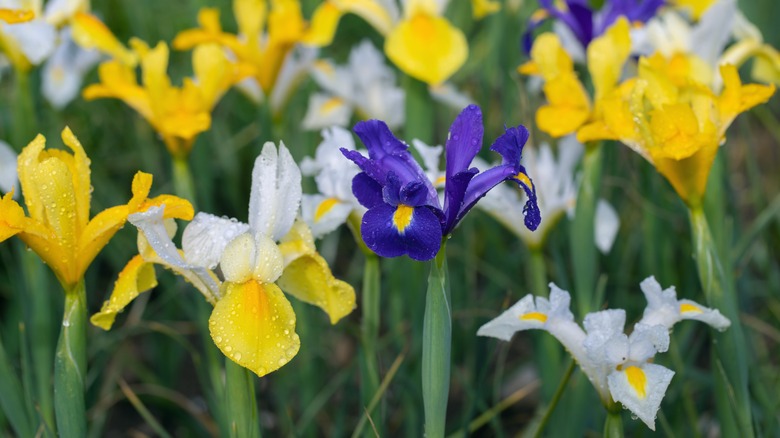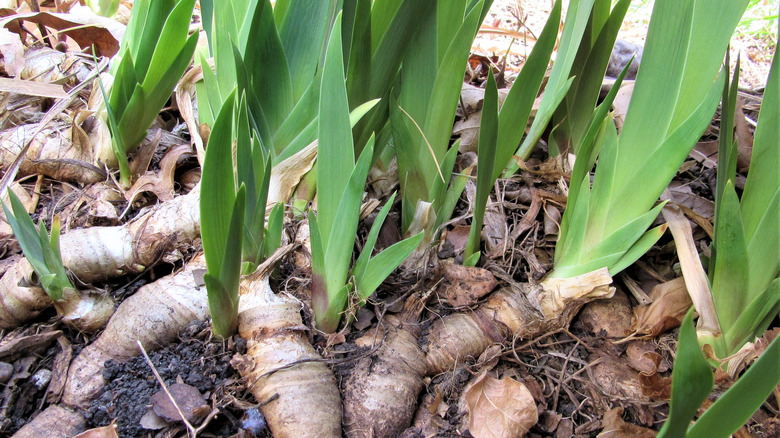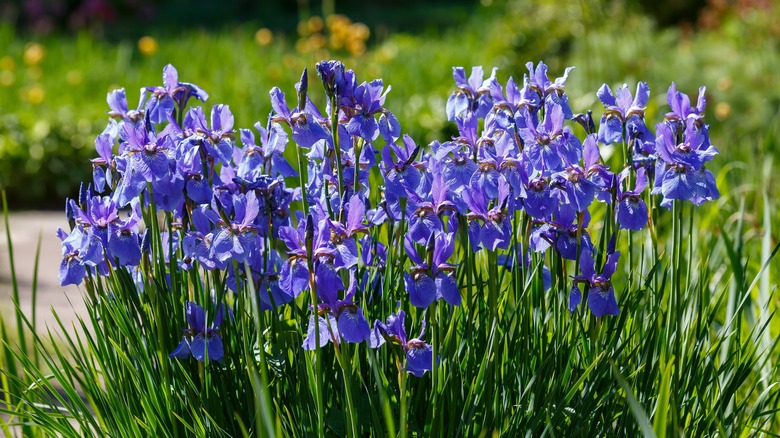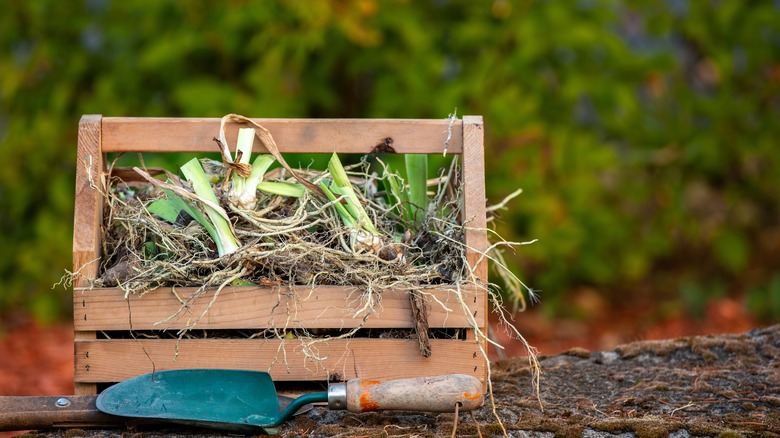If Your Iris Plants Won't Flower, You're Likely Making These Mistakes, According To Our Master Gardener
Whether you're growing a simple cottage garden or a carefully manicured landscape, irises make a beautiful addition. These gorgeous flowers are low-maintenance and come in a wide range of colors and sizes. Whatever the color and size of the irises you are growing, there are a few reasons you may be seeing healthy green leaves but no flowers. The area in which they are planted and regular maintenance are just a few factors to consider when troubleshooting these lovely plants.
There are many types of irises, but they fall into three main categories. Bearded irises may be the most common, identified by a patch of fuzz on the lower petals which creates the "beard". The blooms of beardless varieties have a similar growth habit but no fuzz. Both of these options are hardy in cold climates, depending on the specific cultivar. There are also Aril, also known as crested irises which thrive in hot, dry environments. These are the most showy, but can only be grown as perennials in zone 7 and warmer. If your irises are not blooming, regardless of the type, here are a few things to check.
Planting and fertilization
Problems with the soil are a very common reason irises won't bloom. Although they don't require an exceptionally fertile growing medium, it's a good idea to add some compost to the area in which they are planted to ensure they have the nutrients they need to produce those beautiful blooms. Skip the synthetic fertilizers when growing irises because too much fertilizer can cause them to grow beautiful green leaves but no blooms.
How irises are planted can also greatly affect their ability to produce flowers. To ensure your irises are planted properly, you'll need to know what kind you are growing. Most irises grow from rhizomes, although some species grow as bulbs. Bearded irises grow from large rhizomes that should not be completely covered by soil. The roots of these types should be slightly visible above the soil and not mulched. Beardless irises also come from rhizomes, but they can be planted just under the surface of the soil and covered with mulch. Iris bulbs should be planted about three times deeper than the size of the bulb. So, if your iris variety is 2 inches tall, plant it 6 inches deep.
Growing conditions
Although some types of irises will produce blooms in partial shade, you will get the most flowers from those planted in full sun. Crested irises are particularly demanding when it comes to sun. Since these cultivars originate in desert regions, they have evolved to require as much sun as possible to bloom. You might get some good blooms from bearded and beardless irises in a bed that gets six hours of full sun a day, but only plant crested option in areas with eight hours a day or more of direct sun.
The soil conditions necessary for irises to bloom also vary by the type. Crested species will not thrive in wet soil, while beardless cultivars are more tolerant. These flowers grow naturally in boggy areas near bodies of water. Bearded irises fall somewhere in the middle, preferring well-drained soil that will not cause the rhizomes to rot. If you have planted a species of iris in the wrong soil or sunlight conditions, try moving them to a more ideal location for that particular type and hopefully next year you'll be rewarded with loads of blooms.
Regular maintenance
Irises are low-maintenance plants, but that does not mean you can just plant them and enjoy their blooms forever. If your irises have produced flowers in the past but have suddenly stopped, they may need a little attention. Since these types of flowers grow from rhizomes and bulbs, their roots divide and spread each year. Eventually, they will become root-bound. Too many roots in a small space become compacted, making them less able to absorb the resources they need to produce flowers. Divide your irises every three years or so to get consistent blooms. This is the perfect time to share your extras with loved ones and neighbors for a friendship garden.
We discussed the fact that irises do not need very fertile soil, but if they have stopped blooming and all the other conditions are right, they may just need a little boost of nutrients. Adding a 1-inch layer of compost around the roots in the fall or early spring each year will ensure they always have what they need to reward you with a show-stopping display of stunning flowers.



